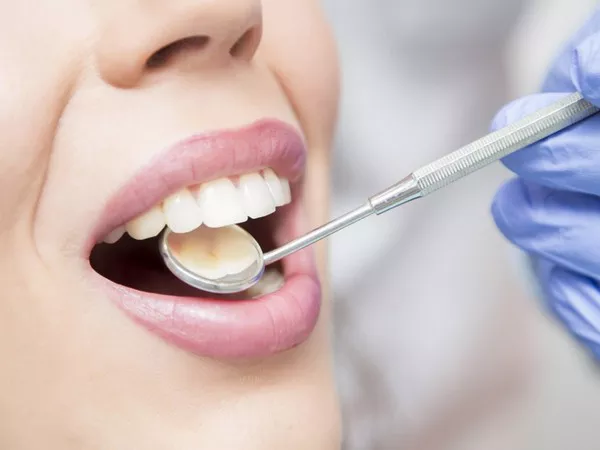A bright, white smile is something many of us strive for. Unfortunately, our teeth can become stained or discolored over time due to a variety of factors, such as poor oral hygiene, certain foods and drinks, and even aging.
While there are many over-the-counter products available that claim to whiten teeth, some people may wonder whether a dentist can remove stains more effectively. In this article, we will explore the question of whether the dentist can remove stains from your teeth.
Why Do Teeth Get Stained?
Before diving into the topic of stain removal, it’s important to understand why teeth get stained in the first place. There are several reasons why teeth may become discolored or stained, including:
Food and Beverages:
Certain foods and drinks contain specific compounds that can cause staining of the teeth. Some examples include coffee, tea, red wine, and dark-colored fruits like blueberries and cherries.
Tobacco Use:
Smoking cigarettes and using other tobacco products can lead to yellowing and staining of the teeth.
Poor Oral Hygiene:
Plaque buildup and poor oral hygiene habits can contribute to tooth discoloration.
Aging:
As we age, the enamel on our teeth naturally wears away, revealing the yellowish layer of dentin underneath.
Can the Dentist Remove Stains?
The short answer is yes – a dentist can typically remove stains from your teeth. However, the methods used to do so may vary depending on the severity and type of staining you have.
Professional Teeth Cleaning
One of the most effective ways to remove surface stains from your teeth is to visit your dentist for a professional teeth cleaning. During a professional cleaning, your dentist or dental hygienist will use special tools to scrape away plaque and tartar buildup. They will also polish your teeth with a granular paste to remove external stains and leave your teeth looking brighter and whiter.
Teeth Whitening
If you have deep-set or stubborn stains, your dentist may recommend teeth whitening. This is a more involved treatment than a professional cleaning and may involve the use of powerful bleaching agents. There are two types of professional teeth whitening treatments available – in-office and at-home. In-office treatments involve the use of strong bleaching agents applied to your teeth by your dentist, while at-home treatments come in the form of custom-fitted trays that you wear overnight.
Dental Bonding
If your tooth discoloration is caused by a chip or crack, your dentist may recommend dental bonding. Dental bonding involves the application of a tooth-colored resin to the surface of your tooth to create a more aesthetically pleasing appearance.
Porcelain Veneers
Porcelain veneers are another option for those who wish to remove difficult-to-treat stains. They are thin, custom-made shells that cover the front of your teeth to mask any staining or discoloration.
Tools Used by Dentists for Stain Removal
Now that we’ve explored some of the most commonly recommended stain removal options, let’s take a closer look at the tools used by dentists for this purpose:
Ultrasonic Scaler: This tool uses high-frequency vibrations to loosen and remove plaque and tartar buildup from the surface of your teeth.
Polishing Cup: A polishing cup is a small, rubber-coated device that attaches to a dental handpiece. It is used to apply a polishing paste to your teeth to remove external stains and leave your teeth looking brighter and whiter.
Handheld Scaler: A handheld scaler is similar to an ultrasonic scaler but is designed to be used on smaller areas of your teeth, such as the spaces between them. It is particularly useful for removing stains caused by tobacco use.
Dental Drill: A dental drill may be used during a dental bonding procedure. It is used to roughen the surface of your tooth, making it easier for the bonding material to adhere to it.
Conclusion
If you’re unhappy with the color of your teeth, there are many options available to help you achieve a brighter, whiter smile. Whether you opt for a professional cleaning, teeth whitening treatment, or a more involved procedure like dental bonding or porcelain veneers, your dentist has the expertise and tools needed to help remove stains and discolorations from your teeth.
Keep in mind that maintaining good oral hygiene habits, such as brushing twice daily and flossing regularly, can also help prevent future staining and keep your teeth looking their best.
Related Topics:






























